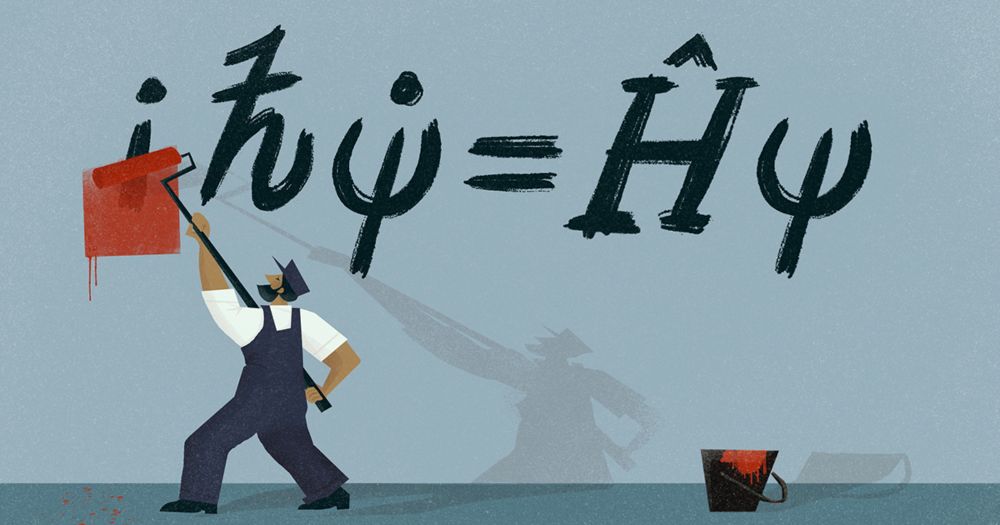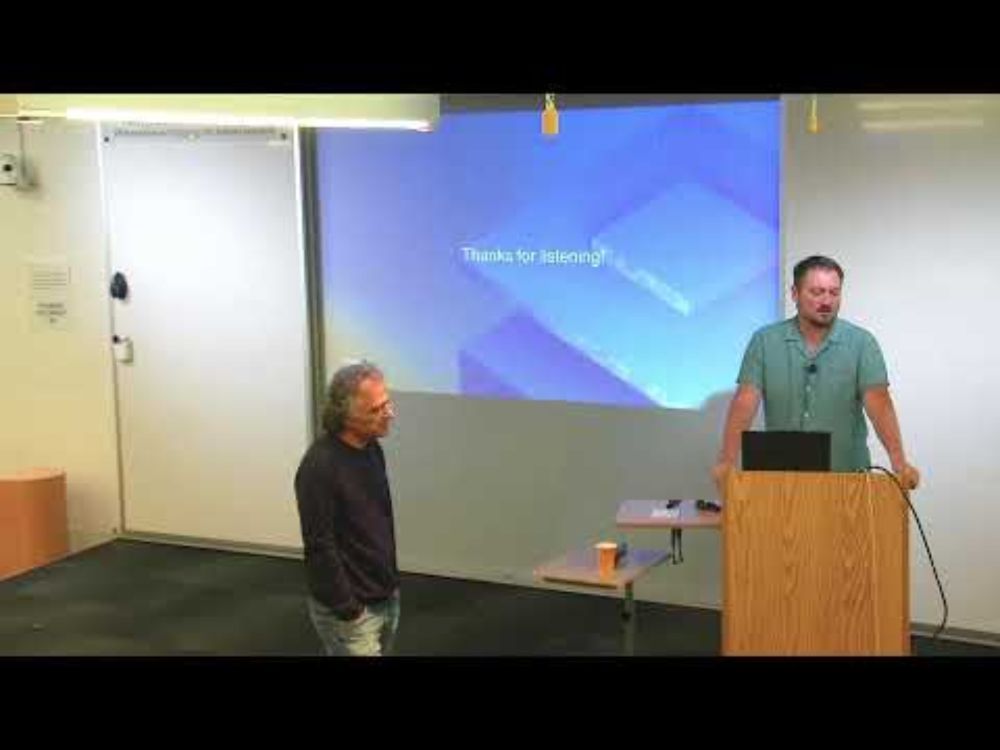
Useful tools I've made:
- Quirk: https://algassert.com/quirk
- Stim: https://github.com/quantumlib/stim
- Crumble: https://algassert.com/crumble

I love it. Waiting until the problem is manifest is a great way to have waited too long. Fix shit now.
I love it. Waiting until the problem is manifest is a great way to have waited too long. Fix shit now.
(It's actually not the first AI generated pull request that's been submitted, but the other one was actually a correct bug fix thus not slop.)

(It's actually not the first AI generated pull request that's been submitted, but the other one was actually a correct bug fix thus not slop.)
And the slides: docs.google.com/presentation...
I was also on the panel discussion at the end of the day (also in the linked playlist).

And the slides: docs.google.com/presentation...
I was also on the panel discussion at the end of the day (also in the linked playlist).


Talk Title: Optimizing the Annoying Stuff: Reducing Costs Obscured by the Abstract Circuit Model
Abstract: attached as image

Talk Title: Optimizing the Annoying Stuff: Reducing Costs Obscured by the Abstract Circuit Model
Abstract: attached as image
arxiv.org/abs/2510.00370

arxiv.org/abs/2510.00370
In the clip at 38:10, a speaker relays Pons being told a light water control had excess heat. Instead of "oh no", Pons replies "That's the most exciting thing, we see it too!". The audience bursts into laughter at the clear self-fooling.
In the clip at 38:10, a speaker relays Pons being told a light water control had excess heat. Instead of "oh no", Pons replies "That's the most exciting thing, we see it too!". The audience bursts into laughter at the clear self-fooling.
I doom the concept of that 2021 Nature paper by showing how to compile any distributed quantum protocol into real-only gates while preserving locality.

I doom the concept of that 2021 Nature paper by showing how to compile any distributed quantum protocol into real-only gates while preserving locality.
In the supplementary material, they admit it doesn't work if pre-shared entanglement is present. Which there's no way to test for. So the experiment doesn't actually do the thing.

In the supplementary material, they admit it doesn't work if pre-shared entanglement is present. Which there's no way to test for. So the experiment doesn't actually do the thing.
arxiv.org/abs/2509.05232
arxiv.org/abs/2502.017...
arxiv.org/abs/2509.05212

arxiv.org/abs/2509.05232
arxiv.org/abs/2502.017...
arxiv.org/abs/2509.05212
// DIDNTDO: handle negative values
// DIDNTDO: handle negative values
Anyways... why haven't quantum computers factored 21 yet?
algassert.com/post/2500
Anyways... why haven't quantum computers factored 21 yet?
algassert.com/post/2500
I traced it to extra error info.. in a switch default that never even runs! I think the compiler was unconditionally constructing a location for the temporary string or something?? 🤮
Clear example why people trust C more than C++.

I traced it to extra error info.. in a switch default that never even runs! I think the compiler was unconditionally constructing a location for the temporary string or something?? 🤮
Clear example why people trust C more than C++.
Generating a 1M line NASM file has gone far better than a 1M line C++ file. nasm finishes in a few seconds on inputs of that size (gcc was taking hours). But still unnecessarily slow...
Generating a 1M line NASM file has gone far better than a 1M line C++ file. nasm finishes in a few seconds on inputs of that size (gcc was taking hours). But still unnecessarily slow...
And the slides: docs.google.com/presentation...

And the slides: docs.google.com/presentation...
If one of the two CCZs on the right wasn't there, it'd yield an n-qubit incrementer with ̶4̶n̶→3n T gates.
If the CCCZ wasn't there, it'd yield n single-shared-control Toffolis to be done with ̶4̶n̶→3n T gates.

If one of the two CCZs on the right wasn't there, it'd yield an n-qubit incrementer with ̶4̶n̶→3n T gates.
If the CCCZ wasn't there, it'd yield n single-shared-control Toffolis to be done with ̶4̶n̶→3n T gates.
arxiv.org/abs/2507.23079

arxiv.org/abs/2507.23079
www.youtube.com/watch?v=R3yM...
And her co-author Schrottenloher's talk at the Simons Summer Cluster on Quantum Computing:
www.youtube.com/watch?v=0pnX...

www.youtube.com/watch?v=R3yM...
And her co-author Schrottenloher's talk at the Simons Summer Cluster on Quantum Computing:
www.youtube.com/watch?v=0pnX...
www.youtube.com/watch?v=bbR0...
A later longer version of the talk, given at the Simons quantum colloquium:
www.youtube.com/watch?v=gxzt...

www.youtube.com/watch?v=bbR0...
A later longer version of the talk, given at the Simons quantum colloquium:
www.youtube.com/watch?v=gxzt...
I thought that too… til I was writing the loop analysis in stim's circuit-to-dem conversion, realized it was analogous, and the standard answer was way better than what I'd been writing.
I thought that too… til I was writing the loop analysis in stim's circuit-to-dem conversion, realized it was analogous, and the standard answer was way better than what I'd been writing.
MX: X basis measurement
CX: controlled NOT
T: 45 degree rotation around Z axis
(Classical feedback and ancillas is allowed.)
MX: X basis measurement
CX: controlled NOT
T: 45 degree rotation around Z axis
(Classical feedback and ancillas is allowed.)

Could be recency bias (average rate should drop over time) but the totals are already higher.

Could be recency bias (average rate should drop over time) but the totals are already higher.
Lattice surgery likes accessing these kinds of operators, so it'd be counter-productive to decompose them using CX gates while hoping a later step would put them back together. Having notation that avoids that is handy.


Lattice surgery likes accessing these kinds of operators, so it'd be counter-productive to decompose them using CX gates while hoping a later step would put them back together. Having notation that avoids that is handy.

